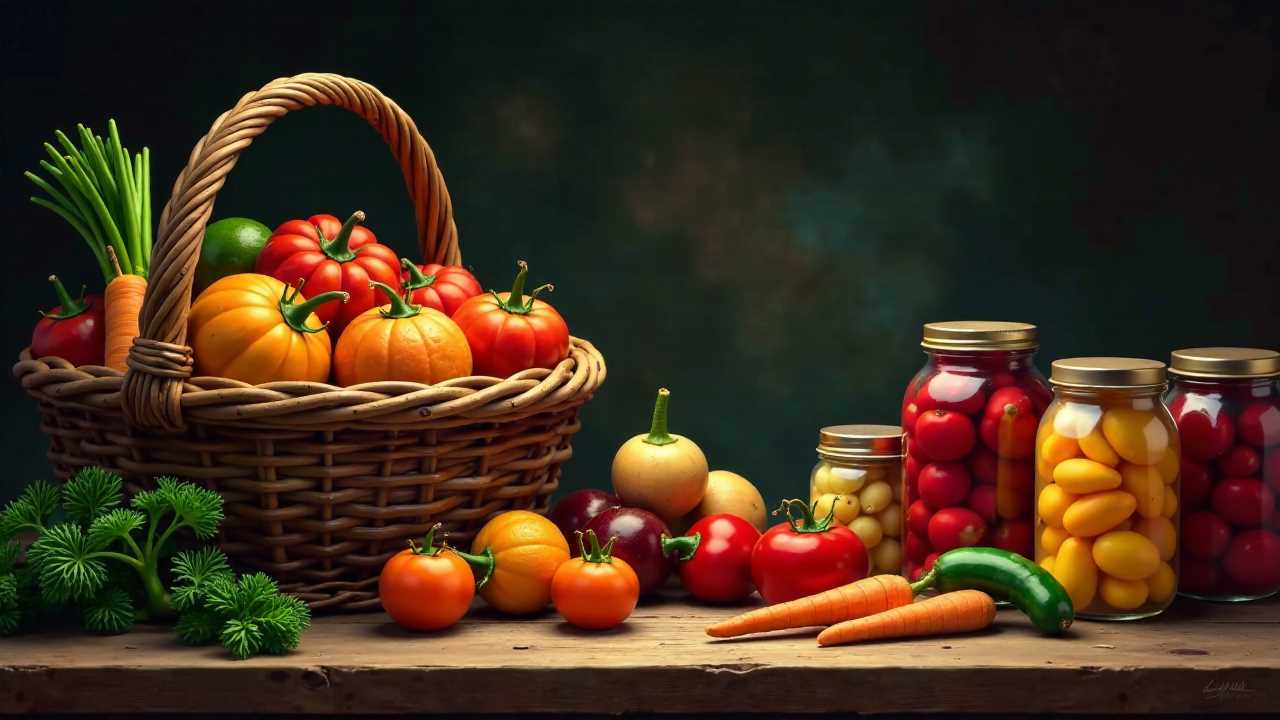
As the leaves turn and the air becomes crisp, fall heralds the season of harvest. This is the perfect time to preserve the bounty of fruits and vegetables, ensuring that you can enjoy the flavors of the season long after the last crop has been gathered. Mastering fall harvest preserving involves various techniques, including storage, canning, jarring, drying, pickling, and fermentation. Each method has its unique advantages and can be tailored to suit your preferences and the types of produce you have on hand.
Understanding Storage Techniques
Proper storage is the foundation of effective preservation. Different fruits and vegetables require different storage conditions to maintain their freshness. For example, root vegetables like carrots and potatoes thrive in cool, dark, and humid environments, while apples prefer a slightly warmer and drier setting. Utilizing breathable containers or burlap sacks can help regulate moisture levels and prevent spoilage. Additionally, regularly checking stored produce for signs of decay will ensure that your harvest remains in optimal condition.
The Art of Canning
Canning is a time-honored method of preserving food that involves sealing it in airtight containers to prevent spoilage. This technique is particularly effective for high-acid foods like tomatoes and fruits. To can effectively, you’ll need canning jars, lids, and a water bath or pressure canner. The process involves preparing your produce, filling the jars, and processing them to eliminate bacteria and enzymes that cause spoilage. Canning not only extends the shelf life of your harvest but also allows you to enjoy the taste of summer all year round.
Jarring for Freshness
Jarring is similar to canning but often refers to the process of preserving foods in jars without the need for heat processing. This method is ideal for items like jams, jellies, and certain pickled vegetables. The key to successful jarring is ensuring that your jars are sterilized and that you use the right balance of sugar and acid to create a safe environment for preservation. Jarring allows you to capture the essence of your fall harvest in a convenient and visually appealing format.
Drying: A Simple Preservation Method
Drying is one of the oldest methods of food preservation and is particularly effective for fruits, herbs, and vegetables. By removing moisture, you inhibit the growth of bacteria and mold. You can dry produce using a dehydrator, an oven, or even air drying in a well-ventilated area. Dried fruits make excellent snacks, while dried herbs can enhance your culinary creations. This method not only preserves your harvest but also concentrates the flavors, making them even more delightful.
Pickling for Flavor and Longevity
Pickling is a fantastic way to preserve vegetables while adding a tangy flavor. This process involves immersing produce in a vinegar solution, often with spices and herbs for added taste. Commonly pickled items include cucumbers, carrots, and beets. The acidity of the vinegar helps to inhibit spoilage, making pickled vegetables a long-lasting addition to your pantry. Experimenting with different spices and flavor combinations can lead to unique pickled creations that elevate your meals.
Fermentation: A Nutrient-Rich Option
Fermentation is a natural preservation method that not only extends the shelf life of food but also enhances its nutritional value. This process involves the use of beneficial bacteria to convert sugars into acids, which act as preservatives. Foods like sauerkraut, kimchi, and fermented pickles are excellent examples of this technique. Fermentation adds a depth of flavor and can introduce probiotics, promoting gut health. With a little patience and the right ingredients, you can create delicious fermented foods from your fall harvest.
In conclusion, mastering fall harvest preserving opens up a world of possibilities for enjoying seasonal produce year-round. Whether you choose storage, canning, jarring, drying, pickling, or fermentation, each method offers unique benefits and flavors. Embrace the art of preservation and savor the fruits of your labor long after the harvest season has ended.
 Family Craft ProjectsHome ImprovementCooking and BakingReuse and RecycleDIY GiftsEco-Friendly ProjectsDIY Home SolutionsSeasonal ActivitiesFun and GamesLearn TogetherPrivacy PolicyTerms And Conditions
Family Craft ProjectsHome ImprovementCooking and BakingReuse and RecycleDIY GiftsEco-Friendly ProjectsDIY Home SolutionsSeasonal ActivitiesFun and GamesLearn TogetherPrivacy PolicyTerms And Conditions
